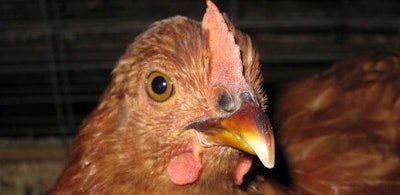
Part of the World Organisation for Animal Health (OIE) Terrestrial Code that covers the health of all land animals, a key chapter for the global poultry industry worldwide covers highly pathogenic avian influenza (HPAI). Under review since 2017, the amended version including a chapter entitled “Infection with high pathogenicity avian influenza viruses” has now been adopted, according to the International Poultry Council.
The agreement came at the 88th General Session, which is taking place in Paris, France, this week. Publication of the revised Terrestrial Code is expected in the coming weeks.
While comments on the draft chapter were received from a number of countries, OIE states that none of these was “of a substantial nature.”
What’s new in the guidance?
The majority of the changes to the previous version of the chapter (from February 2021) relate to improved clarification.
For example, for countries free of avian influenza, an awareness program must be in place related to avian influenza risks, and the specific biosecurity and management measures to address them.
In a section covering low-pathogenic avian influenza (LPAI) viruses, the new version explains that a monitoring system must be in place for poultry. This is justified because some H5 and H7 LPAI viruses have the potential to mutate into HPAI forms, but it is impossible to predict which of them will do so, or when. Monitoring of poultry will help to identify unexpected any increase in virulence of LPAI viruses. Meanwhile, natural transmission to people can be avoided by monitoring LPAI viruses in domestic and captive birds.
Background to the chapter on avian influenza
According to the latest version of the chapter, it covers the listed disease and infection with HPAI viruses. This applies to an infection poultry with any influenza A virus that has been assesses as highly pathogenic by the OIE manual. To confirm an infection with an HPAI virus, the virus must have been isolated and identified — or specific viral ribonucleic acid must be detected — in one or more samples from poultry. In poultry flocks, the incubation period is 14 days.
Key objectives of the chapter are the mitigation of risk to animal and public health from infection with HPAI viruses. However, other influenza A viruses of avian origin can adversely affect the health of animals and people. For this reason, any sudden increase in virulence of an LPAI virus in poultry is notifiable as an “emerging disease.” Because they can also impact human health, infections with LPAI viruses in domestic and captive wild birds, and HPAI viruses in all birds other than poultry are also notifiable.
Because some LPAI viruses (particularly H5 and H7 subtypes) can mutate into highly pathogenic forms, monitoring of low-pathogenic viruses is also covered in the chapter.
In some situations, use of vaccination may be recommended. For example, this be useful as a complement to disease control where stamping-out alone has not been effective. The decision over whether to vaccinate or not is the responsibility of the country’s veterinary authority. However, any vaccine administered must meet the OIE standards, as must diagnostic and pathogenicity tests.
View our continuing coverage of the global avian influenza situation.
















